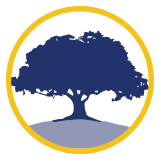Early Reading and Phonics
Teaching Early Reading at London Fields
Reading is the gateway to all learning. Teaching children to read and write independently, as quickly as possible, is one of the core purposes of a primary school. These key skills not only hold the keys to the rest of the curriculum but also have a huge impact on children’s self-esteem and future life outcomes.
Reading and writing are both two part processes; readers decode and comprehend, writers create and encode. In one respect, decoding and encoding are the ‘mechanical’ skills that children need to master in order to be able to comprehend what they read and write. Research has shown that by teaching phonics, through a synthetic, systematic approach, children become fluent readers who can read words 'at a glance'.
Whole School Approach to Teaching Reading
The English spelling code is one of the most complex in the world. It has evolved over hundreds of years and has had many different influences. As a result, words are made up of combinations of 44 different sounds but many of these sounds are spelt in different ways in different words. Furthermore, we only have 26 letters to write these sounds. This can lead to misconceptions for children, as letters combine together in different words to make different sounds. For example, the letter ‘a’ sometimes makes the sound /a/ (c-a-t), or, with other letters, the sound /ay/ (d-ay) or the sound ‘air’ (f-air). This can be overwhelming for early readers.
In order to help the children conquer this complex code, we teach it systematically, using an evidenced based phonics scheme called Read Write Inc. Phonics (RWI). Read Write Inc. Phonics is a DfE-validated systematic synthetic phonics programme with a whole-school approach to teaching early reading and writing, designed to ensure progress for every child, in every primary school.
We begin by teaching children to read the first thirty sounds (Set 1 Sounds) and to be able to blend these sounds to read words (i.e. to know that the sounds c/a/t can blend together to read the word cat). Once children have conquered this skill, they apply this phonic knowledge to read and comprehend storybooks that are carefully matched to the sounds they know. Children learn to read these books with a storyteller’s voice. At the same time, we teach them how to write the sounds and use this knowledge to spell words, leading to writing short sentences.
Once children are secure, further sounds (Set 2 and then Set 3) are introduced and the children read texts with increasingly complex sounds and graphemes (different ways of spelling the sounds, e.g. /igh/, /ie/ or /ay/, /ai/). They learn that a sound can be both said and spelt using a combination of 2 or 3, or even 4 letters. This is called a grapheme (e.g. igh represents the /i/ sound in the word night).
Comprehension
Being able to decode a text alone is not enough. Children need to make sense of what they are reading and need to be actively taught key comprehension skills. We do this through comprehension activities linked to the stories the children come to read within the Read Write Inc. scheme as described above, and also through a range of literacy activities based on core texts shared with the children.
We know that good readers question, check and engage with their own understanding; these are some of the skills we seek to develop in our pupils.
Read Write Inc in Practice
Children are assessed each half term and work in progress groups to master each level of phonics and reading. They are then taught in a RWI group which matches their appropriate level of challenge. Some children need extra practice to keep up and we accelerate the progress of these children with one-to-one tutoring.
Read Write Inc. Fresh Start
Fresh Start is a structured literacy programme, rooted in phonics, for pupils in the later years of primary school. We use this programme to support upper Key Stage Two pupils who are reading below age-related expectations, or who are new to English.
Supporting Home Reading
There is much you can do to support your child at home.
- Talk to them! The most important thing you can do is to talk to your child and listen to them when they are talking to you. Try to extend their vocabulary range and their skill at talking in increasingly more complex sentences. For example, try to teach them alternative words for ideas, or nouns they already know.
- Read to them daily and always discuss the story you are reading to try to build your child’s comprehension skills and understanding.
- Practise the sounds they know at home using the RWI virtual classroom. QR codes are sent home on a sticker so children can consolidate their new learning.
- Listen to your child read every day and embed this routine, encouraging reading for pleasure.
- Attend in-school parent workshops on offer throughout the year.
Please click here for a RWI Parent FAQ document and here for home reading guidance 'top tips'.
All children accessing RWI can use the RWI Virtual Classroom. Here is our best advice for making the most of this fantastic resource.
1. Set aside 10 minutes to watch a film with your child each day.
2. Find a quiet space for your child to watch the film on a laptop or tablet.
3. Praise your child as they join in with the lesson – make it fun
The more your child practises by using these films, the quicker they’ll learn to read.
Where to next?
Once children have learnt to read independently, they move onto our English curriculum. Lessons are focused around a series of carefully chosen, quality texts which act as the stimulus to teach higher level comprehension, continue to develop fluency and build children's knowledge of the world.
Please see the English subject page for further information about our English curriculum.
